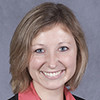An overview of LCvista’s Ask Me Anything webinar with NASBA
You had audit questions. We had answers.
LCvista recently hosted our first webinar with the National Association of State Boards of Accountancy (NASBA). The goal of this webinar was to answer the audience’s audit-related questions, offer insights into frequent NASBA findings, and show how LCvista helps facilitate a desk audit as a NASBA sponsor.
In this blog post, we’ll provide an overview of what we covered, plus answers to attendee questions asked during the Q&A section.
The audit experts
Our AMA with NASBA was run by the following speakers, who provided a peek behind the audit curtain and some much-needed insight.

Lindsay Lane
Compliance Auditor at NASBA with the National Registry

John Pytel
Former CEO of Conferences i/o, current VP, Conferences i/o at LCvista

Danielle Turner
Senior Compliance Specialist at LCvista

Brooke Head
Product Manager at LCvista
Common NASBA findings (and how to avoid them)
Getting audited can feel scary, but Lindsay Lane, NASBA’s Desk Audit Manager, hopes to help lessen that fear. If you’re going through an audit, she says, you should assume that there will be findings from NASBA. “It’s not a bad thing,” she says. “Findings do not mean you failed the audit.”
Having said that, there are several common findings that can be avoided by following best practices.
Promotional material omissions
The most common findings regarding promotional materials include:
- Omission of the program knowledge level
- Omission of prerequisites for programs with knowledge levels of intermediate, advanced, or update
- Omission of required topics in the evaluation form
- Missing required elements or showing incorrect fields of study on certificates of completion
Ensuring that promotional materials requirements are fulfilled is a great way to reduce NASBA findings in the event of an audit.
Failing to note elements of engagement
One of the newest additions to Group Live requirements is the element of engagement. It’s also a common item in NASBA audits.
As Lindsay describes, NASBA wants to see documentation that you’ve added some sort of element of engagement in your 50 minute Group Live class. This could be as simple as noting an element of engagement in your speaker notes, listing it in your agenda, or including a slide that says “Case Study” or “Instructor Post Question.” As Lindsay explains, documentation is essential. “We get a lot of explanations that an element of engagement was included, but there’s no documentation for it. That’s all we need.”
Incomplete attendance monitoring
Live Attendance Monitoring and Documentation is one of the biggest areas that NASBA writes findings in, both for Group Live and Group Internet Based programs. This often falls into one of the following scenarios:
- Supporting documentation does not match attendance monitoring procedures
- Supporting documentation is incomplete—no indication of check in/out times or how late arrivals, early departures, and extended breaks are handled
- Sponsors allowing CPAs to self-report CPE credits
- Written attendance policy lacks sufficient detail
Lindsay has a great rule of thumb to avoid these specific findings: If you’re in charge of the CPE programs for your company, imagine that you’re no longer with the company in three years, and someone reaches out to the company needing a certificate for a course they took with you. Is your documentation good enough that a new person in your job could go back and see that that person attended and issue them a certificate confidently so that they can get the right amount of CPE credits? In other words, could a stranger come in and make the same inferences that you are from your material?
Sponsors should always be aiming to capture this level of detail, and this information should always be sponsor-documented. Self-reporting from CPAs alone is not allowed.
Incorrect credit increments
In 2024, NASBA revised their standards to state that sponsors should select to use either 0.2 or 0.5 credit increments for a session. This means that there should not be both 0.2 and 0.5 rounding used within a single program; sponsors must choose one or the other.
Mismatched qualified assessments in self study
A qualified assessment in a self study program should directly tie back to a program’s learning objective. For example, if the learning objective states that participants should be able to calculate something, the qualified assessment should include the calculation of that thing.
Alternatively, if the learning objective of a self study is for its participant to be able to categorize something, the qualified assessment should have them categorize that thing. Overall, participants should carefully write and review the learning objectives for a self study program.
How LCvista helps facilitate a desk audit as a NASBA sponsor
Audits can be stressful, but knowing where to find the information you need makes it much easier. For each delivery method selected for audit, you need:
- Attendance monitoring policy and supporting documentation
- Certificate of completion
- Evaluation form or summary of evaluation results
- Course announcement or promotional materials
- Instructor/author/developer bio
- Reviewer bio
- Documentation per S24 for specific delivery method
In this portion of the webinar, LCvista product experts John, Danielle, and Brooke offered an overview of the ways in which LCvista makes each of these elements easier.
Acing attendance monitoring
No matter how you use Conferences i/o, it’s going to make sure you have all the NASBA-compliant documentation you need for attendance monitoring. For example, it gives you the exact check-in and check-out times for each attendee and shows you how long they were there for.
Sponsors can also export this data to an Excel file and save it there as well. You can always go back in the event of an audit and make sure it’s all there, compiled in a NASBA-friendly way. You can even look at the full history of an attendee’s check-ins and check-outs, which is helpful for long, more complicated programs with more breaks.
In the event of exceptions, such as an attendee’s technology failure, you can make a note within “Adjust Credits & Note” in the “Credits” column of Conferences i/o. For example, if an attendee’s phone died, you could go in and make a note explaining that exception.
Capturing an element of engagement in Group Live
There are many ways to introduce an element of engagement, as we discussed earlier. Conferences i/o also provides a number of options, such as its Q&A feature or its polling feature. Documenting this is as simple as putting a slide at the end that says “Q&A”, and Conferences i/o provides all the data you need to prove it.
Attendance monitoring for Group Internet
For Group Internet based programs, there’s an attention check requirement of three attention checks per credit hour. You can capture this with polling, CPE codes or code words.
A caveat that John points out is that if it’s a single field of study but more than one hour, just seeing the total number of polls someone responded to isn’t necessarily enough.
As John explains, “Let’s say it’s a two-hour session. The first hour is tax and the second hour is auditing. You would have to do a total of six polls. How do you know which polls the attendee answered and can get credit for? Just knowing the total amount isn’t enough. In that case, NASBA wants to see the poll questions and attendee answers.”
Thankfully, you can tie polls or code words to a field of study with Conferences i/o to clear up this issue.
Accessing remaining required elements in LCvista
There are a number of ways to capture the remaining required elements in LCvista. Here’s a brief overview.
Course announcement/promotional materials
Within LCvista, you can find the landing page you’re looking for in the Learning & Compliance portal. From here, you can view additional program details or choose to enroll in or launch a session. You can also get to the landing page from your dashboard calendar or from an assignment.
Instructor bios
Users can preview instructor bios from the session summary of any program. An admin can add and edit bios in the “Manage Training” section of the Learning & Compliance portal. This can also be done at the session level.
Certificate of completion
As an admin, you can collect everyone’s certificates by doing an export. If you’re in “Manage Attendees”, you can view certificates directly for each attendee, which will take you to your chosen template. That template will be pre-populated with the credits and field of study that were given to you.
Evaluation form/summary
As a participant, you will receive an email that you got an evaluation for a training you attended. Within LCvista, the user can fill out and submit their evaluation.
As an admin, you can pull a number of reports on evaluation responses in the “Reports” section, depending on what data you’re looking for.
#20 questions for NASBA, answered
We told our webinar participants they could ask us anything, and they didn’t hold back. Here are #20 questions we received for NASBA (and their answers).
01
What documentation is being looked at for total timing of a session? Is a polling platform timing report sufficient?
Assuming this is related to Group Internet based, NASBA looks at the documentation on the polling report and the amount of CPE credits you’ve listed will be available for the course. They ensure those numbers match up. For example, if you’re offering a course for returning CPE credits with 150 minutes of learning, NASBA will make sure that number matches up with the polling information.
02
Can you go over instruction credit? For example, if we have three instructors and the class is only one hour?
Each of the instructors can receive up to 3x the amount of CPE credit available to participants, but it needs to be based on their preparation time for the course. If an instructor prepares for one hour for a one-hour course, they could be eligible for up to two CPE credits for that course. This has to be determined between the sponsor and their instructor.
If each instructor only presents for 20 minutes but is still there for the whole session, they’re still eligible for those credits. You can also reach out to the state board for suggestions or rules around the nuances of this scenario.
03
What does NASBA want to see documented for the “Two-Way Video Participation in a Group Live Program”? What do they want to review during a desk audit? Is a list of people who had their camera turned off sufficient?
NASBA has just implemented this, but has not actually started auditing any of these courses. Since there are no examples of this yet, they’ll provide more information on this at a later date.
04
What is the timeline for finding out if you’ve passed a sponsor audit? We submitted our stuff on 4/12 and haven’t heard back.
Audit results do take a quite a while to get back. The Registry has a considerable backlog to work through, with new applications coming in and sponsors adding new delivery methods. Account managers do the first level audit review. They do everything in the order it’s received, so it depends on how many applications are ahead of yours. After an account manager looks at them, they come to Lindsay, then to the associate director. It can take a few months overall. Feel free to reach out to your account manager, but expect a few months.
05
Can you talk to us about technical reviewers? How will this show up on the yearly renewal?
The renewal is a self-certification renewal form. The only documentation required at your renewal is your program list and a copy of the certificate that you’ve issued. There would be a self-certification that you’re having your courses reviewed as required by the standards that is answered by the renewal every year.
06
How does not having the response to your audit affect your renewal?
It doesn’t. If you’re still waiting on it, your renewal should still be sent out to you the same time it always is, and you can renew as though you have nothing outstanding.
07
If there are 0 responses to your evaluation for a session, is the objective still achieved by offering the evaluation?
Yes, absolutely. Evaluations are voluntary. A response is not required, but you are required to offer them.
08
Regarding CPE credits, are we able to mix code words and polling questions, with the recipients getting full credit?
You can mix whatever type of attendance monitoring mechanisms you want to use, as long as the responses to those are somehow being noted throughout the course. If you were using code words, there would need to be a way for you to know your attendees got the code word, but you can mix and match.
As a best practice, if you’re using Conferences i/o, you can do it, but we recommend not going that route. It can introduce more confusion among attendees. Unless there’s a really good reason not to, try to just stick to one.
09
What are our options if technology fails or if there was an error in getting code words set up and people are not able to input them?
In this case, you’d want to keep administration notes. Not everything will run perfectly every single time, but documenting when it doesn’t will help you. If you’re comfortable using your sponsor ID to issue CPE credits for those attendees, NASBA would leave it up to you to make that decision.
Ultimately, things happen. An attendee’s phone might die, or their internet might cut out. It’s up to the sponsor’s discretion to make the final call. Just be wary of repeat offenders. Every once in a while someone might try to game the system.
NASBA will also look at whether you’re doing what you can as a sponsor to put the right checks in place. Do you have what you can in place, within reasonable expectations, as a sponsor?
10
Can you use two fields of study for a 50 minute program?
There’s no standard that says you cannot, but NASBA definitely recommends that you don’t. There are some state boards that won’t accept a CPE certificate that has one CPE credit split into two fields of study. If it’s just one credit program, put it in the field of study that has the bulk of the content. It would come down to whether the state board takes a partial credit in a field of study.
11
One of our clients said they attended a day long Group Live training hosted by one of our offices and they did not sign in/sign out. If someone was able to vouch that the client attended all day would they be able to get credit? What would that look like from a NASBA standard point?
For a situation like this, if someone could vouch for the fact that they attended, NASBA would be okay with you issuing CPE credits if that person can sign an attestation statement saying that they were present. That’s up to the sponsor’s discretion. NASBA would just want to see documentation.
12
Does the admin bulk checkout in Conferences i/o “count” as a legitimate check out?
It does have the ability to allow the admin to do a bulk checkout with the end of the session as a checkout timestamp for everyone. In Kiosk mode (where there’s a digital sign-in sheet), there’s one device attendees can check in on, or a staff person can check people in on a tablet. Rather than lining everyone up at the end and having them check out one by one, you can make it so that anyone leaving early has to check out, but the admin can do a bulk checkout for everyone who’s there at the end of the session.
13
Do you foresee any future process changes to develop learning and content understanding?
Not in the very near future, no. The standards are reviewed every two years, so there can always be changes that come with those.
14
In a Group Internet based session, if someone checks in, completes three attendance verifications, but forgets to check out, are they eligible for CPE? One of the attendance verifications was towards the end of the program, which would indicate they attended the full training.
NASBA would be okay with that documentation for an audit and issuing CPE credits.
15
How will other changes from 2024 standard impact desk audits?
There aren’t a ton. Two-way video will be the big change for Group Live that impacts audits.
16
Does NASBA publish desk audit results and common pitfalls?
NASBA does have a CPE newsletter that goes out quarterly. Sometimes it includes articles with common findings. NASBA does not publish the actual results of its reports.
17
Can you go over the requirements for attendance tracking around virtual sessions and granting CPE? Do you have to take both the person’s duration and number of responses, or can you use just the number of responses to determine how many credits are awarded? How do you address this when there are multiple fields of study?
NASBA would look at the documentation to see that the attendees had responded to at least three attendance monitoring mechanisms per 50 minutes. We also want to see that your course ran for 50 minutes. That can all be done in the same report. Both of those are things we’re looking at.
If there are multiple fields of study, if it’s just a one CPE credit course, we recommend that you don’t do that. If it’s more than one CPE credit, base the amount of time in the content on each field of study and break it out that way. We’re not calculating it minute by minute, but base it as best you can on the content.
In Conferences i/o, you can see the polls by field of study.
18
Can you share the specific element of engagement(s) needed for an in-person program? Would an attendance sheet and a Q&A session at the end of the program fulfill the requirement?
Element of engagement for Group Live is separate from your attendance monitoring process. It is just to ensure your attendees are still engaged in the content.
It’s required that you have one element of engagement per 50 minutes. This can be a multitude of different things: a Q&A, an instructor post question, a case study, a small group breakout. These elements can be documented in program materials, an agenda, or instructor notes.
19
Do polling questions have to be associated with the learning objectives or content? Or are generic polls (where do you live, etc) count?
If it’s an element of engagement for Group Live, they should be content related. You’re ensuring your attendees that are live in person are still with you. Polling questions used for attendance monitoring do not have to be content related.
20
If I have a five hour training with five instructors and each instructor presents for one hour, can they claim four participant credits?
In this case, NASBA would defer to the state board. The rule is that instructors can earn credit time based on the actual amount of time they spend preparing for the program. If it turns out to be a lot of CPE credits, you’ll want to check with the state board and make sure it’s acceptable for their CPE requirements.
Further reading
Ready to see how LCvista can help your firm cut down compliance risk and improve learning outcomes?


